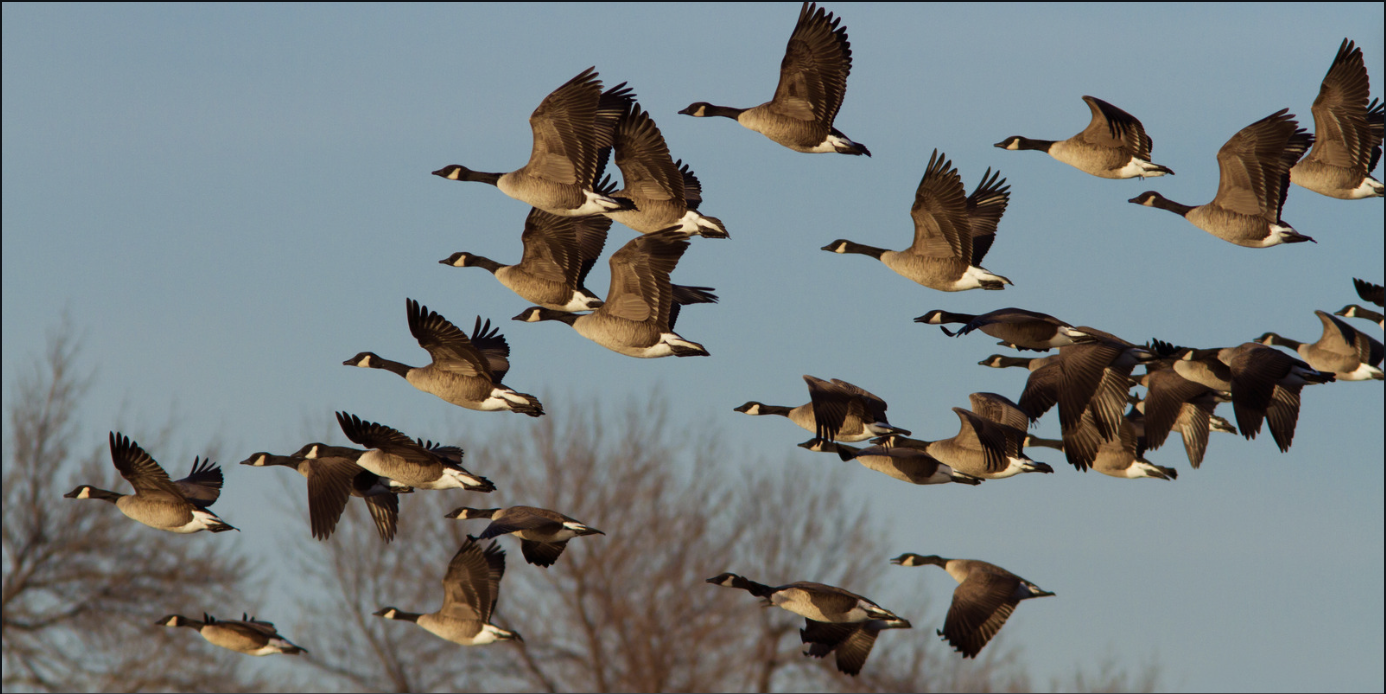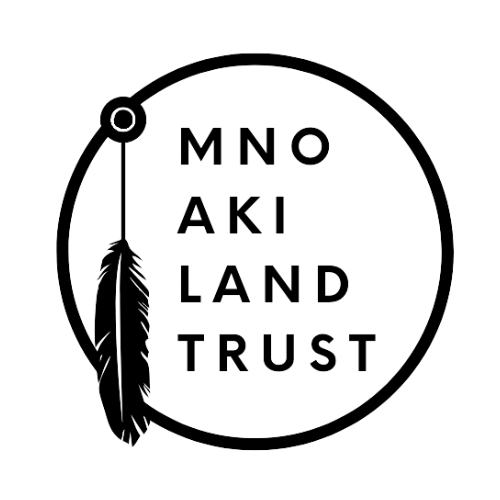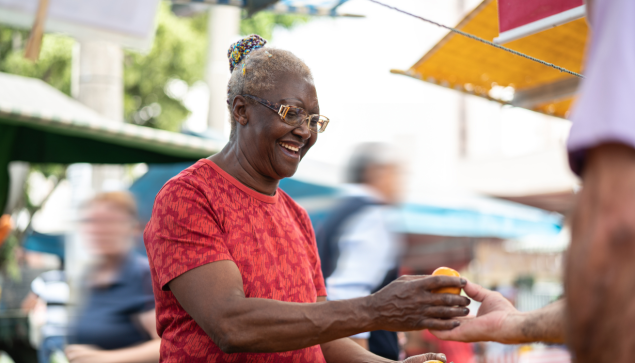Collaborative writing with Becky Big Canoe, co-founder of the Mno Aki Land Trust, and Charlotte Dumont, FSC’s Communication Coordinator.
On June 24th 2024, Food Secure Canada had the privilege of hosting a webinar that showcased the journey of the Mno Aki Land Trust, which was facilitated by Afua Asantewaa, formerly FSC’s Communities Convenor. Becky Big Canoe’s narrative taught us a profound lesson about life, resilience, and reciprocal gratitude—fundamental values in Indigenous worldviews. Becky told her story just as grandmothers in Indigenous cultures pass on life lessons to their grandchildren. These stories are sacred and embody the rich heritage of Indigenous culture which, as Afua points out, are rarely, if at all, mentioned in schools.
Becky comes from the community of Chippewas, an Anishinaabe Nation located on Georgina Island, on the southern shores of Ouentironk, also known as Lake Simcoe. She highlights the importance of Indigenous languages early in her story, as a reminder that language carries her culture, identity, and deep connection to the land. In the intimacy of this webinar, Becky lets us know that she goes by different names in Ojibwe. Called nigig kweh (otter woman) in remembrance of her otter clan, but also N’gaadjigokwe (the still water surrounded by the river) or Manido naateshing (the one who speaks to the ancestors). She chose to present herself today as a grandmother. Grandmothers, she says, are ubiquitous around the world. They care for their grandchildren, observe their state of well-being, and restore balance. In Indigenous communities, grandmothers represent a source of wisdom that teaches the youngest about Indigenous ways of being and how to interact with the living world.
Becky’s story is the story of all her people. She described the environment in which her ancestors grew up as a place of abundance and profusion of animals and food. Before the arrival of the European colonizers, Anishinaabeg people followed the cycle of nature to feed themselves, and their diet, she explained, was never better; forests and plains were dense, swamps and lakes were luxurious and sheltered multitudes of animals and plants living in harmony with human beings. In the warmer seasons, her people harvested acorns, roots, and hunted ducks while geese were so prolific that the “sky would darken for days”. Anishinaabe people followed the migration of caribou trails to the west, bringing with them the food they harvested and stored in caches. They preserved their provisions using methods of drying, salting, and smoking. Their children were involved at an early age in the harvest to learn how to identify food but, above all, to understand their connection with the land.
Winter was a time of storytelling, Becky recollected. Gathered around the fire, the Elders shared myths, like the story of how the world was created by Skywoman. These personal and educational stories recall the origins of her ancestors, Indigenous moral values, and beliefs, as well as an inspiration for the younger generation. From one Indigenous community to the next, stories change, but the spiritual message remains the same. Becky described these stories as lively and adaptive to the times. They teach their people how to be Anishinabeeg (= good people) and serve as a warning of what could happen to them if they are not in harmony with their environment. The Wendigo story, for instance, is the story of a trickster creature that survived by eating other humans. This story, told in a variety of ways, embodies greed and excess and showcases the loneliness of self-centered people. It served the purpose to prevent children from misbehaving.
When settlers arrived in the late 1700s, the unique methods of land and resource management of Indigenous communities changed drastically. French and English settlers saw the richness of Turtle Island and perceived this wealth, from a Western point of view, as an opportunity for trade and property ownership. European colonial powers used the Doctrine of Discovery to claim Indigenous lands and force their cultural and religious beliefs on Indigenous peoples. This, Becky testified, was a difficult concept for the Anishinaabeg and other Indigenous Nations to understand, as their relationship with the land is based on the concept of interconnectedness and spiritual connection with the environment. In Indigenous worldviews, what is taken from the Earth is only borrowed until it can be returned. Their traditional harvesting activities gave them the responsibility to be caretakers (stewards) of the land. Becky highlighted that due to language and cultural barriers, Indigenous communities were deceived by settlers, who used this confusion to their advantage and strengthened their hold on Indigenous lands and Peoples.
The early fur traders were fond of the two-layered beaver pelts used to make felt hats that were fashionable in Europe at that time. Travelers used Indigenous expertise in hunting and hide tanning in exchange mostly for copper and metal utensils which could not be found on Turtle Island, and facilitated Indigenous cooking. According to Becky and some Indigenous Elders from her community, this trade of goods was the first step that broke the Indigenous agreement with the natural world.
From this economic partnership grew the Fur Trade. The Hudson’s Bay Company, funded by the English Crown, held fundamentally conflicting views from those of the First Nations’ and forced Indigenous Peoples to become economically dependent on the colonizers. Becky recalled a prophecy that had warned Indigenous people of the “two faces” of the European colonizers. But again, the grandmother emphasized that due to cultural beliefs, her people did not consider the colonizers’ willingness to trade as a threat at first. Europeans used the language barrier to their advantage. In one instance, when the Indigenous chiefs were called to sign a land deed in Toronto, instead, they signed a surrender, and then their whole community was displaced. Later on, the Indian Act was a betrayal of their trust in the Crown. Anishinaabeg, along with all the other Indigenous Nations, were forced to live on reserves and, a few years later, forced to send their children to residential schools. This deprivation of Indigenous culture and education along with the violence used by the settlers to disenfranchise Indigenous people resulted in intergenerational trauma.
Becky describes the aftermath of the Indian Act as a descent into hell. She was emphatic that it was an excuse to put Indigenous people on reserves and restrict them from their fishing, hunting, and harvesting rights, thus taking them further away from their nomadic and self-sufficient lifestyle. This social disruption, she argued, fractured Indigenous people’s identity, which was already challenged by the colonizer.
Along with losing their culture, language, and identity, Indigenous people lost their right to food sovereignty. Land Trust spaces, Becky stresses, are a glimmer of hope, where communities actively work to permanently conserve land. The Mno Aki Land Trust is a place she built with other grandmothers from across Turtle Island, to engage with Indigenous people who want to learn and reconnect with the land. The grandmothers are creating new songs and dances to bring back the wild rice that was so prolific in the region of Georgina Island and integral to their lifestyle. Their goal is to liberate themselves and their communities from the reliance on supermarkets, return to traditional practices, and reestablish a sense of pride and belonging. In their fight for food sovereignty, the grandmothers advocate for their right to control their destiny through food systems.
Becky’s story is a testimony of resilience. When Becky told the story of what happened to her ancestors, she acknowledged the past to move forward and build a future where her grandchildren will have the space to express their traditional cultural allegiances.
In her narrative, she offers society an avenue for reparation and reconciliation with Indigenous Peoples. We need a new way, she concludes, a new relationship. We need to learn how to live together and share. We have a common language now, she said. We share the same beliefs, but we express them differently. The best way to preserve the land is to teach people how to deal with it, and many Indigenous people still have that knowledge.



